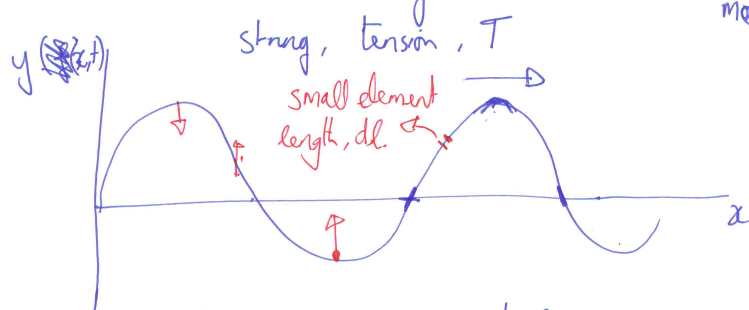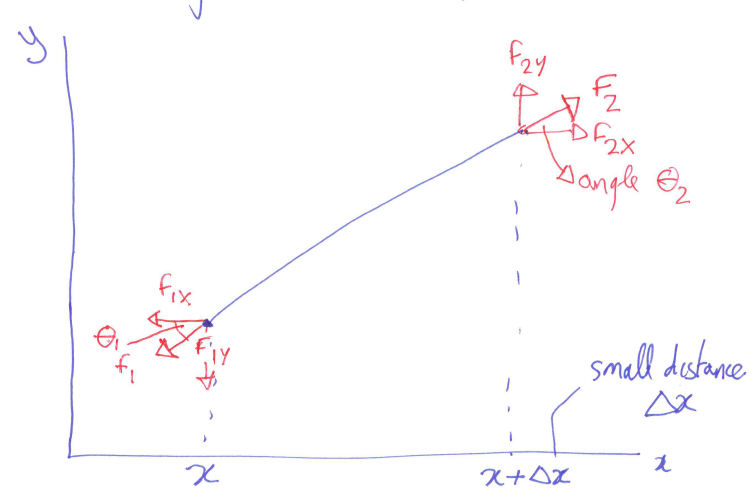PX154 - G1a - waves on a taut string
[YF 15.4 "second method"]

-
string with a mass per unit length,
-
consider a transverse wave propagating along the string
- oscillations of the string are only along the y-direction (no physical motion along the x-direction)
-
we analyse the behaviour of a small element

-
this is a flexible string, ie: forces can only act along the string itself
-
originally, we have tension,
, in the string -
motion of the string is only along the y-direction
- therefore,
and should be equal and opposite to each other - no net force, hence no acceleration, along the x-direction
- we set
- therefore,
-
there will be components of force along the y-direction with a resultant force (unless the string is straight, ie:
) - there is a net force along
- at x,
- acting downwards
- writing it in terms of gradient:
- at
:
- writing in terms of the gradient:
$$F_{2y} = F_{2x} \left(\frac{dy}{dx}\right)_{x+dx}$$- net force acting upwards:
- if
, then there will be an acceleration along the y-direction, since , where
- for mass, we use- hence:
- remember
:
- let
:
- this is a wave equation
- comparing with the wave equation, we see
$$v = \sqrt{\frac{T}{\mu}}$$- comments:
- this is a simple model
- we could account for the stretching of the string
- we could account for stiffness (perhaps a metal wire)
- or consider the 'bead model' for wavelengths approaching distance between atoms in solids. [Y2, Y3: phonons]
- this is a simple model
- there is a net force along